Auto Investors Believe in Detroit's Electrified Future

Promoting a future for wide electrification appears to be the Achilles’ heel for bearish investors. Despite some bad publicity last week, Tesla Motors’ already sky-high share price resumed its relentless upward trend after a brief September slump. However, Tesla isn’t the only domestic company benefiting from electrification. Both General Motors and Ford have also seen marked improvements on Wall Street following tech-forward corporate announcements.
For General Motors, that meant the promise of widespread electrification. CEO Mary Barra pressed the issue by reaffirming GM’s three-tiered policy of, “Zero Crashes. Zero Emissions. Zero Congestion.” On a LinkedIn posting, Barra elaborated on the company’s vision where technology minimizes accidents via driver’s aids and autonomous hardware, nullifies emissions through alternative powertrains, and reduces congestion using inter-vehicle connectivity.
In addition to GM’s proposal to launch 20 new electric or fuel cell vehicles by 2023, the company has seen its share price jump twice in the same week. But Ford saw similar, although more modest, improvements in value following it’s own announcement of a tech-driven future.
Ford CEO Jim Hackett, loosely defined the company’s drastic cost-cutting measures and proposed a flexibility that would allow it to remain competitive within an uncertain market. Part of that meant keeping its options open in regard to electrification and not abandoning the autonomous technologies it has spent a bundle procuring.
Market analysts have been carefully optimistic. More bullish experts have marked up both companies’ prospective valuations but admit to there being a cap on what Wall Street can expect, according to a report from Automotive News.
“At this point in the cycle [both in the U.S. and globally], it is extremely difficult to sustainably push earnings expectations to new highs,” Morgan Stanley analyst Adam Jonas said in a note to investors. “We are not surprised to see auto firms spend greater portions of their presentations focused on a thoughtful pivot to Auto 2.0.”
That isn’t reserved to domestic manufacturers, either. Toyota also pressed carefully onward with its own vision of the future by showcasing its new fun-loving attitude and adherence to a zero-emissions tomorrow — neither of which appear to have hurt the feelings of investors. It’s valuation improved along a similar scale to GM’s, although its already higher starting point made the increase slightly less noteworthy. Ford also didn’t see astronomical gains but, having spent so much of the last five years on a downward trajectory, the sudden improvement could be indicative of something.
That something may be investor lust for tech talk and planning.
“General Motors believes the future is all-electric. A world free of automotive emissions,” product chief Mark Reuss said last week. “These aren’t just words in a war of press releases. We are far along in our plan to lead the way to that future world.”
Reuss’ words coincide with GM’s first stock leap from last week perfectly and was followed by a second jump when Barra discussed the company’s vision roughly a day later.
Ford’s discussion wasn’t nearly as specific, however it did say that it wanted to deliver an EV crossover with a 300-mile range by 2020 and follow it with other electric models. Perhaps more helpful was Hackett’s claim of widespread connectivity, a technology he said could hold hidden financial potential. “I don’t feel that where we are competitively is where we should be,” Hackett said, adding he felt that could be resolved rather quickly.
Some of that is in regard to its current production strategy. While not exclusively tech-driven, Ford wants to streamline production and make some financial room for EV development and employment — but plenty will also be going in to light trucks. It’s a more present-day strategy with hints that the company is keeping one eye on tomorrow. It was exactly what shareholders wanted to hear and, as a result, Ford’s stock price climbed slightly.
Some investors wanted more concrete promises from Ford — which might have been useful in bolstering share prices, but unwise before it has a clear course of action. While Ford definitely intends to put self-driving cars on the road and increase electrification, General Motors appears to have more overt confidence as to how to do it.
“GM has the right hardware — a century’s worth of experience designing and assembling more than 500 million vehicles, more than any other automaker in the world, integrating software and hardware and delivering to customers the vehicles and experiences they want,” said Barra. “And, as America’s largest automaker, GM has the right scale. In contrast to companies that have built a small number of self-driving cars, our 150 manufacturing facilities can produce some 9 million vehicles a year, giving GM the capability to test and manufacture the next generation of electric and autonomous vehicles at scale.”
That shouldn’t make one dismissive of Ford, though. Taking a more pragmatic and less staunch approach to the same technologies doesn’t mean it won’t have them. And, while GM is fixated on futuristic automobiles with unproven sales records, Ford will be trying to improve its profit margins and focus a little more on the vehicles customers want today.

A staunch consumer advocate tracking industry trends and regulation. Before joining TTAC, Matt spent a decade working for marketing and research firms based in NYC. Clients included several of the world’s largest automakers, global tire brands, and aftermarket part suppliers. Dissatisfied with the corporate world and resentful of having to wear suits everyday, he pivoted to writing about cars. Since then, that man has become an ardent supporter of the right-to-repair movement, been interviewed on the auto industry by national radio broadcasts, driven more rental cars than anyone ever should, participated in amateur rallying events, and received the requisite minimum training as sanctioned by the SCCA. Handy with a wrench, Matt grew up surrounded by Detroit auto workers and managed to get a pizza delivery job before he was legally eligible. He later found himself driving box trucks through Manhattan, guaranteeing future sympathy for actual truckers. He continues to conduct research pertaining to the automotive sector as an independent contractor and has since moved back to his native Michigan, closer to where the cars are born. A contrarian, Matt claims to prefer understeer — stating that front and all-wheel drive vehicles cater best to his driving style.
More by Matt Posky
Latest Car Reviews
Read moreLatest Product Reviews
Read moreRecent Comments
- AZFelix Athenian style ostracism where every county allows people to post egregious driver behavior videos on a public forum and then allow registered citizens to vote to revoke the "winner's" license for one year. Counties with large populations can ostracize one driver per 100,000 residents.
- THX1136 I would agree with Kwik & Ollicat with this caveat, none should be mandated unless it is proven 1000% bulletproof reliable with a failure rate of less than 1 in 1million vehicles. Have no issue with making the tech available to those who chose to purchase it.
- Jpolicke Did they ever clear out the arena parking lot with all the buy-back VW diesels?
- Bd2 Tech that prevents non Tesla owners from using electric charging stations and also prevents racist behaviors.
- AZFelix e:Ny1grotto?



















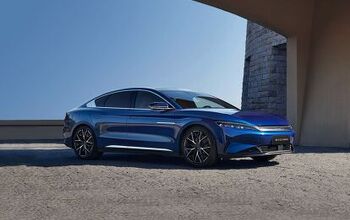


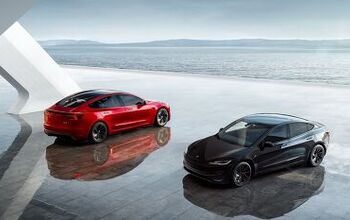



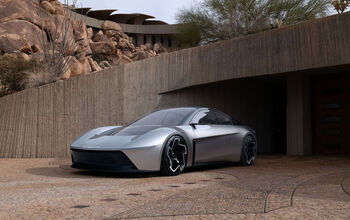

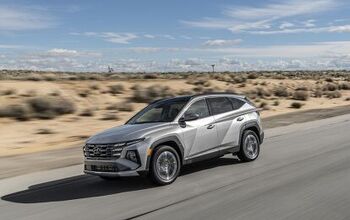
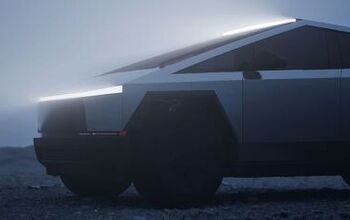
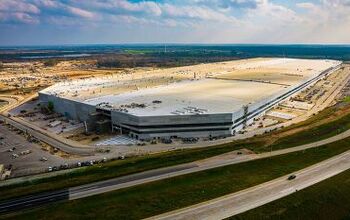
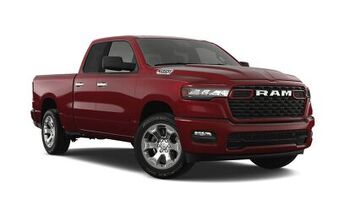


Comments
Join the conversation
1st of all, you really need to be homeowner to have an electric car. Yeah, you could have a charger at work, in your apt complex, dedicated condo/townhome charging stations. They'll be few and far between and added in your rent/hoa fees. 2ndly, no one makes a CUV that you can plug-in overnight. I.E. pic-up kids, go to soccer game, park E-CUV in garage, plug in; next morning mommy-mobile is at 100% charge again. That'll be the 1st money making E-CUV.
Switching to electric cars won't necessitate much improvement to the energy infrastructure. Next time you need a new roof, you simply replace the asphalt shingles with beautiful Tesla solar glass tiles. Pricier than asphalt, but cheaper in the long run because of all the electricity generated. Combine that with a Tesla battery for the house, and you are essentially self sufficient. No more worrying about when the local utility will restore power after a storm. No more concern that you might be contributing to climate change. No more dependence on volatile energy prices. True, made-in-America freedom.